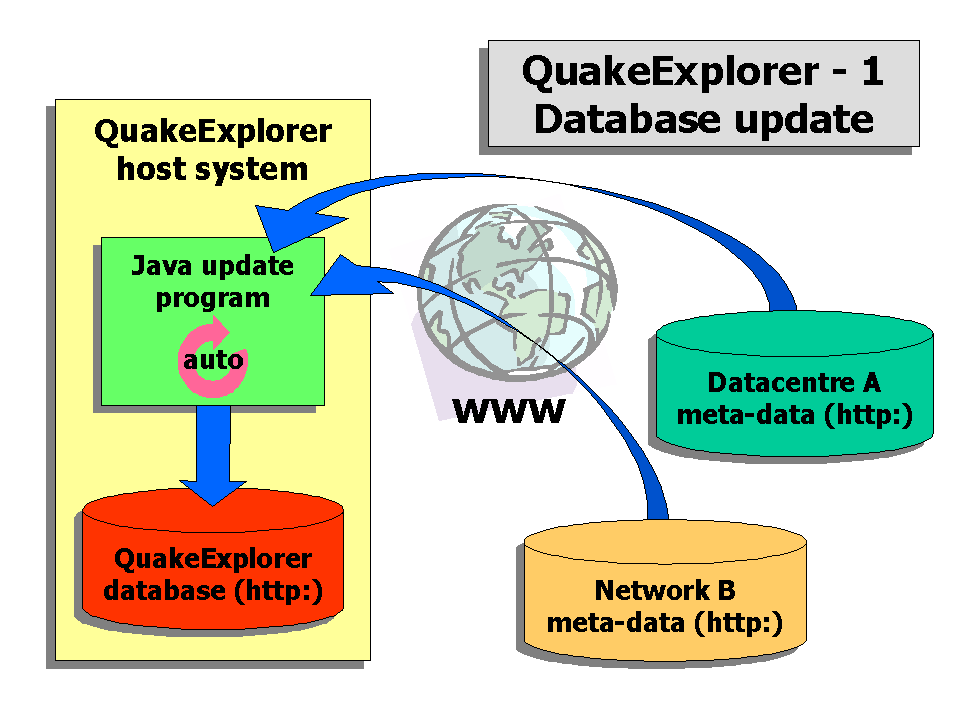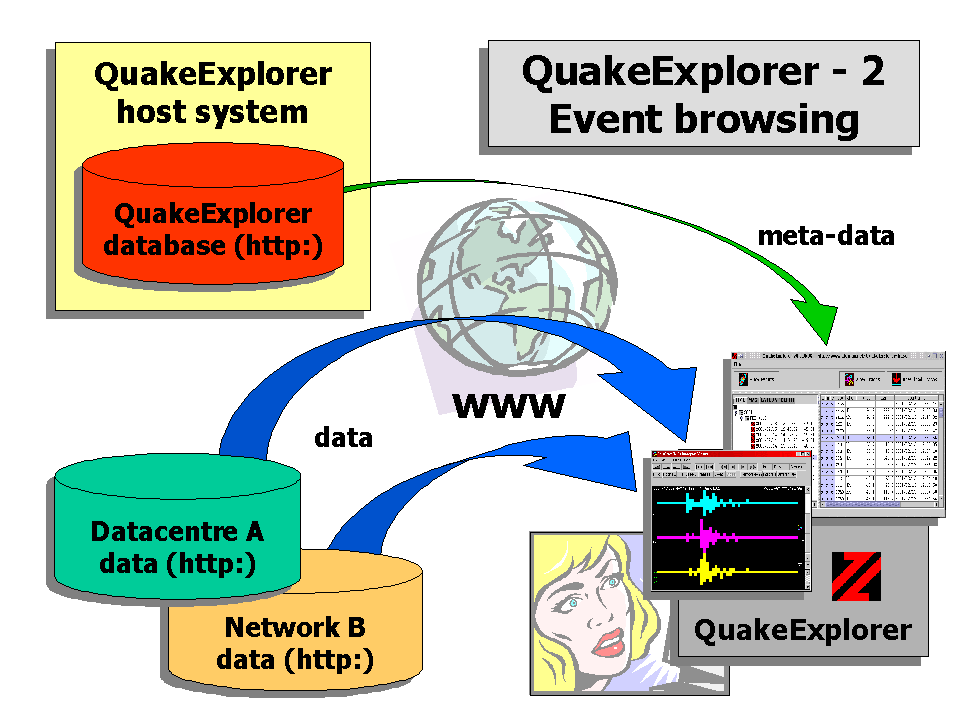QuakeExplorer - how it works
The QuakeExplorer Earthquake Internet Browser and Analysis Tool uses a central database and standard http requests to access over the internet recent seismic event meta-data and traces.
1. The QuakeExplorer database resides in a web site on a host system. At regular intervals, a Java update program scans the Internet to determine the latest event data available at pre-selected datacentres, networks and stations. The update program writes to the QuakeExlorer database a minimal amount of meta-data containing descriptions of the available events and links to the available trace data.

2. The QuakeExplorer browser is a Java application that runs on the user's computer. It allows rapid access over the Internet to the lightweight, event meta-data stored in the QuakeExplorer database, and gives the user interactive access to this information. When the user request the viewing or downloading of traces, the (large) data files are transferred directly from the data source to the user's computer over the Internet; only links to trace data are stored in and transferred from the QuakeExplorer database.
